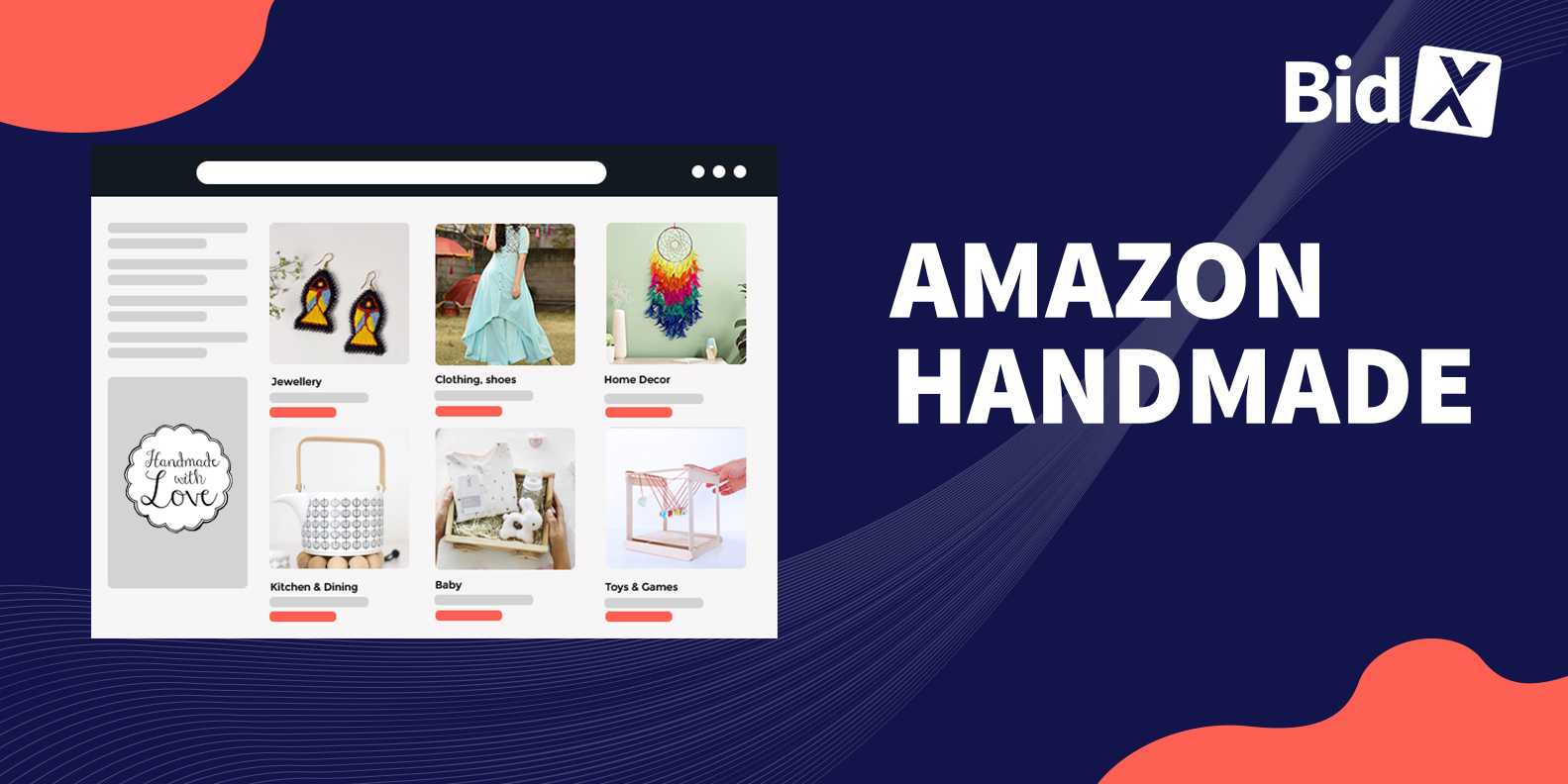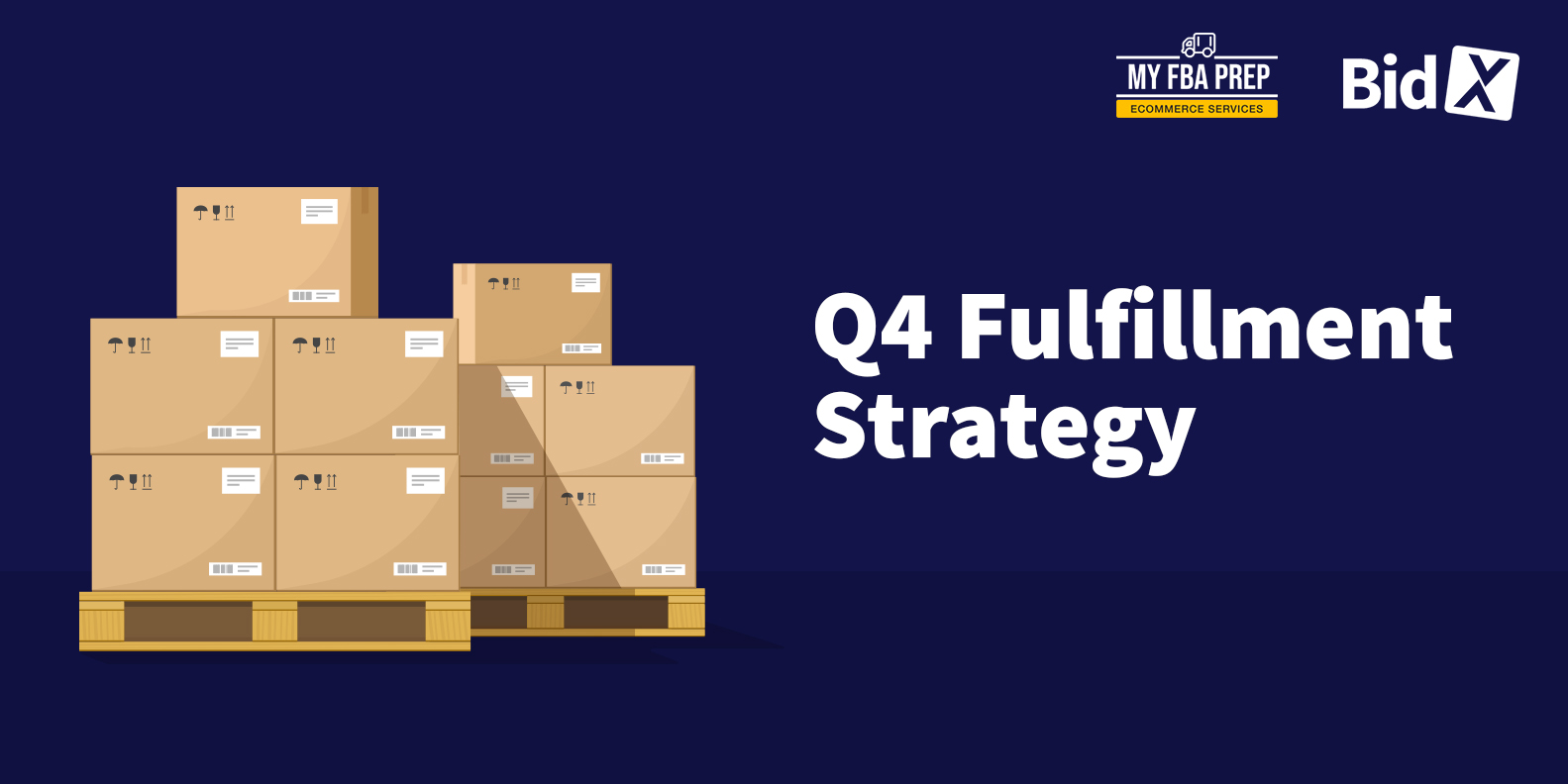What is Amazon Handmade and How Can You Make it Profitable?
Mass-produced items like smartphones and sneakers are a dime-a-dozen in today's world.
There's no doubt consumers have benefited from these products. Still, there's an increasing number of shoppers who want to buy one-of-a-kind products made by real people, not machines.
For artisans who make these unique handcrafted products, Amazon offers a curated marketplace called "Amazon Handmade." It's the platform's answer to Etsy, a popular online marketplace for handmade and vintage items.
In this overview, we'll explore Amazon Handmade in-depth, discuss the benefits and drawbacks of selling on it, whether or not it's profitable, and give you a step-by-step guide to jumpstart your success.
Let's begin by exploring Amazon Handmade's features and how it works.
What is Amazon Handmade?
Launched in 2015, Amazon Handmade is a microsite on the platform where artisans can sell their handcrafted goods to over 300 million online shoppers. It differs from a traditional Amazon seller's account in waiving the monthly $39.99 professional seller fee, charging a 15% referral fee on each item sold instead.
All items must be strictly handmade to sell in this sub-market, though hand-altered items may be allowed. For example, you can source a jean jacket from a third-party vendor to use as a canvas, then sew rhinestones or patches onto it to make it more unique. Other hand-assembled items such as jewelry, clocks, and stuffed animals are also permitted.
Conversely, products that are not considered handmade include those in digital formats such as e-books, mass-produced items, and products created by someone other than the seller. Additionally, artisan vendors may only sell handmade goods in the following categories:
- Accessories
- Artwork
- Baby
- Beauty & Personal Care
- Clothing
- Shoes
- Handbags
- Home
- Outdoor & Home Care
- Jewelry & Watches
- Kitchen & Dining
- Pet Supplies
- Sporting Goods
- Stationery & Party Supplies
- Toys & Games
Pros and Cons of Amazon Handmade
While the Amazon Handmade marketplace offers unique pros for artisans, there are some cons to consider when deciding if it's the right platform for you.
Pros
- No monthly seller fees: Amazon Handmade does not charge the Professional Plan fee of $39.99 per month, but rather a 15% referral fee on each item sold. If you sell little in a month or are even out of stock, this is very helpful because you do not pay money unnecessarily. Also, if you are new to the platform and can’t estimate how much you will sell, this is a convenient model.
- No UPCs: Individual items don’t need to be assigned a universal product code or “UPC,” which can cost around $250 for 10 or $750 for 100 codes.
- Artisan-only platform: Amazon Handmade is exclusively for artisans who sell handmade items that online shoppers covet nowadays. Having a presence here signals to customers that you’re a trusted seller of quality handmade products.
- High visibility: With over 3 billion visits per month, Amazon offers enormous reach and exposure, allowing potential customers to quickly find your handmade products.
- Custom shop: Amazon Handmade offers customizable storefronts for artisans to showcase their products. As a handmade seller, you can upload a photo of yourself and a large shop banner. You also have the option to discuss custom products for customers who may have specific requests. This adds a personal touch, allowing your Amazon Handmade shop to stand out from the competition.
- Easy fulfillment: Handmade sellers have the FBA (Fulfilled by Amazon) feature at their disposal. By sending your merchandise to an Amazon warehouse, those items become eligible for Prime shipping. The platform then takes care of packaging, delivery, and returns on your behalf
Alternatively, you can choose the FBM (Fulfilled by Merchant) feature and handle all aspects of shipping, packaging, and customer service on your end.
Cons
- Slow application process: Amazon is known for its rigorous app process across a variety of storefronts, including Merch by Amazon and Amazon Premium A+ Content. The handmade niche is no different. Here, artisans must prove their products are authentically handmade before they’re allowed to sell, which can take a few weeks to approve.
- Dismal dashboard user experience: Amazon Handmade’s user dashboard lacks certain features and functions that would otherwise make it more user-friendly. Although its dashboard is steadily improving, it still has some ground to cover before reaching the level of precision that Etsy’s platform offers.
- Restrictive categories: Amazon Handmade only enables you to sell products in specific niche categories. If your items don’t fit into one of the permitted sections, you won’t be able to sell them.
- Low customer engagement: Like dropshippers, wholesalers, and private labelers on Amazon, handmade sellers don’t have access to broad customer data. This prevents them from engaging with customers through email newsletters and other forms of outreach.
- Payment delays: Amazon Handmade delays payment until you mark the item as shipped. You’ll then need to wait for the funds to be deposited in order to get paid.
Is It Profitable To Sell on Amazon Handmade?
The Amazon Handmade marketplace is a great platform to leverage, and it has the potential to be profitable. Amazon's sheer size can help you reach millions of customers who are actively searching for handcrafted goods.
However, Amazon Handmade isn't a completely hands-off platform. While the FBA feature can simplify order fulfillment, it requires commitment from artisans who want to leverage its full potential. This includes creating a custom store that connects with shoppers on a more personal level, optimizing products for Amazon SEO, and staying up to date with Amazon's seller guidelines.
Amazon Handmade vs. Etsy
We've mentioned Etsy a few times, and that can give you an idea of Amazon Handmade's biggest competitor. Amazon is known for its low prices and speedy shipping, attracting thrifty customers who want to save on their purchases. Etsy, on the other hand, appeals to a specific demographic of shoppers who value handmade products and vintage finds.
Here are two key differences between Amazon Handmade and Etsy:
Competition
With over 160 categories, Etsy allows a broader range of handmade goods on the platform. But this isn't always advantageous. Amazon Handmade's more restrictive categories can attract less competition, giving sellers an advantage. Plus, not all Etsy vendors are legitimate handmade artisans. Amazon Handmade adds an extra layer of credibility to its application process, requiring artisans to prove their products are authentically handmade.
Fees
When selling on Etsy, you'll be charged a listing fee of $0.20 per item and a 6.5% transaction fee from the sale price. At a glance, this structure is lower than Amazon Handmade's 15% commission. But Amazon has no monthly subscription fee, no listing fees, and no other hidden fees save for optional ad spend. By contrast, Etsy offers a $10/month "Plus" option and Offsite Ad fees that range from 12% to 15% depending on your shop's sales over the past 12 months. The point is, both platforms have nuanced fee structures that require careful consideration. But Amazon Handmade is a bit more straightforward, which can be an advantage for new sellers.
How To Get Started With Amazon Handmade
With no subscription, listing, and UPC fees, joining Amazon Handmade presents little downside risk, if at all. So why not take this opportunity to get started on your journey as a vetted artisan on the platform?
Here's how:
1) Apply to Amazon Handmade
Amazon Handmade is committed to selling only genuine, handcrafted goods. To ensure they meet this standard, artisans must answer questions about their creative process and provide images of their products.
You'll need to:
- Provide your name, email, and specify what type of Maker you are (i.e., solo, less than 20 employees, collaboration, etc.)
- Classify your work as handcrafted, hand-altered, customized, or purchased (Amazon won’t accept mass-produced items or items made by an artisan other than yourself)
- Describe your creation process and/or artisanal skills
- Demonstrate your products are handmade (images are a must!)
- Select your category from the permitted options
Remember that it will take Amazon some time to review your application, so a little patience goes a long way.
2) Create your artisan profile
Once Amazon has accepted your application and you have access to Amazon Handmade, it's time to create a professional profile. This will promote your brand and give customers an understanding of who you are and what you do.
Think about:
- The story behind your brand
- Your unique experience as a Maker
- Your Amazon Handmade shop's mission and purpose
- Why customers should buy your handmade product
- Adding your picture and background for a personal touch
- Listing your social media accounts (no links)
When you have completed setting up your artisan profile, Amazon will assign you a personalized URL that can be used to direct customers to your storefront.
3) Create your Amazon Handmade store
Your Amazon Handmade store is the foundation of your business, allowing customers to discover your work and purchase items. Amazon makes it easy by offering support, starter guides, and other forms of online help.
Be sure to poke in Seller Central, the hub for all of your inventory management and product listings. This will help you gain insight into customer data, plus deep dive into reports and metrics to understand what's working and what's not.
4) List your products
Now that your Amazon Handmade store is ready to go, it's time to get those products listed! Creating listings for each item requires important elements such as product images, descriptions, pricing, and keywords. Navigate to Seller Central, click on "Manage All Inventory," then "Add a Product," and Amazon will guide you through the rest. If you need to make changes once the listing goes live, no worries. You can always go back to Seller Central and make adjustments later.
5) Optimize your listing and run ads
If you want to maximize the visibility of your Amazon Handmade store, you'll need to invest some time and effort into strong SEO practices. This involves researching keywords, writing product descriptions, and creating content that drives online traffic to your store.
Running a successful ad campaign is another great way to get your products seen (and purchased!) by customers. Savvy sellers regularly invest in campaigns targeting customers who show an interest in their product. Those who are new to marketing or want to take the legwork out of the equation can look into an ad automation tool that does the work for them.
Final Thoughts
Amazon provides a reliable platform and helpful resources for budding and experienced artisans alike. Not to mention millions of potential customers the world over. This makes it a great platform for selling handmade products, especially if you're already selling handcrafted goods on other platforms.
Just make sure you give your handmade storefront the attention it deserves. Tell your story as a Maker and highlight the value of your one-of-a-kind creations. Don't forget to optimize your listings for maximum visibility and consider investing in an ad automation tool if you can. Amazon Handmade could be just what you need to make your handmade business flourish.
So go forth and create! Your next customer may be just around the corner.







